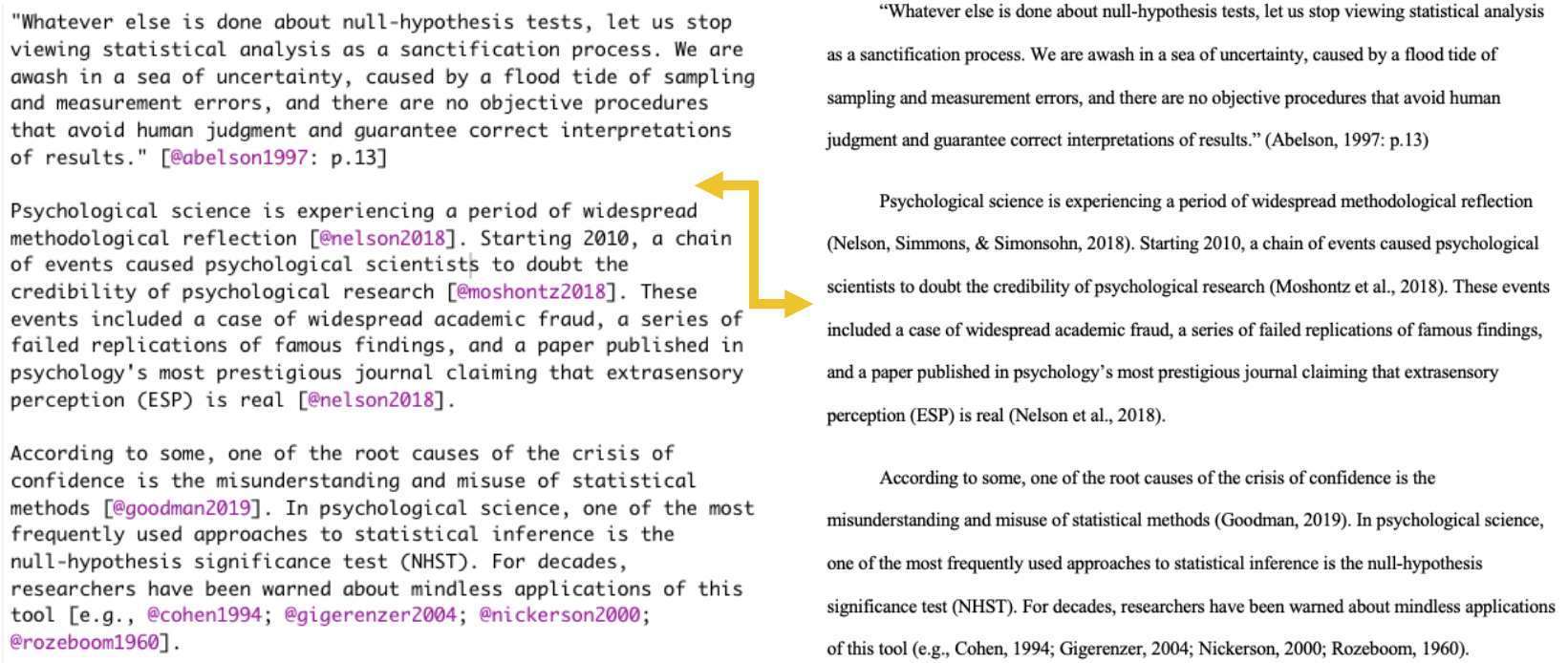Writing reproducible manuscripts in R

Table of Contents
Motivation
I recently gave a talk on writing reproducible manuscripts using R Markdown and the R package papaja (preparing apa journal articles). One of my main motivations for using R to write up my manuscripts is contained in this tweet by Pamela Jacobsen:
Why does so much of academia involve cutting and pasting information from one document to another document? pic.twitter.com/XUJosQgsbr
— Pamela Jacobsen (@pamelacjacobsen) May 17, 2021
A reproducible workflow
In the workshop, I go through methods that keep you from manually transcribing and/or copy pasting tables, figures, statistical output, and citations over and over again.
Perhaps my favorite introduction to the idea of a reproducible workflow (and the horrors of a non-reproducible workflow) is given in this short YouTube video:
Benefits
The video hints at some of the benefits of a reproducible workflow. A reproducible workflow is…
⚠️ Less error-prone
⏳ Less time-consuming
⇄ More dynamic
🔎 More transparent
The result
You can find a list of papers written with papaja here. Here’s a sneak peek of what’s happening behind the scenes, and the rendered result:

Materials
If you want to learn more, you can find the slides here .
If you have trouble loading the slides, you can browse through (and save) a static version of the slides below.
💡 Pro tip: if you are on a mobile device, click on 75% in the toolbar to adjust the size of the slides to Zoom to: Page Width.
If you’d like an example manuscript to work with, I’ve uploaded some materials to this OSF folder.
Feel free to leave a comment or a question
Acknowledgements
❤︎ Slides created with the R package xaringan
❤︎ papaja created by Frederik Aust
❤︎ GIFs created by Shannon Pileggi
❤︎ Artwork created by Allison Horst